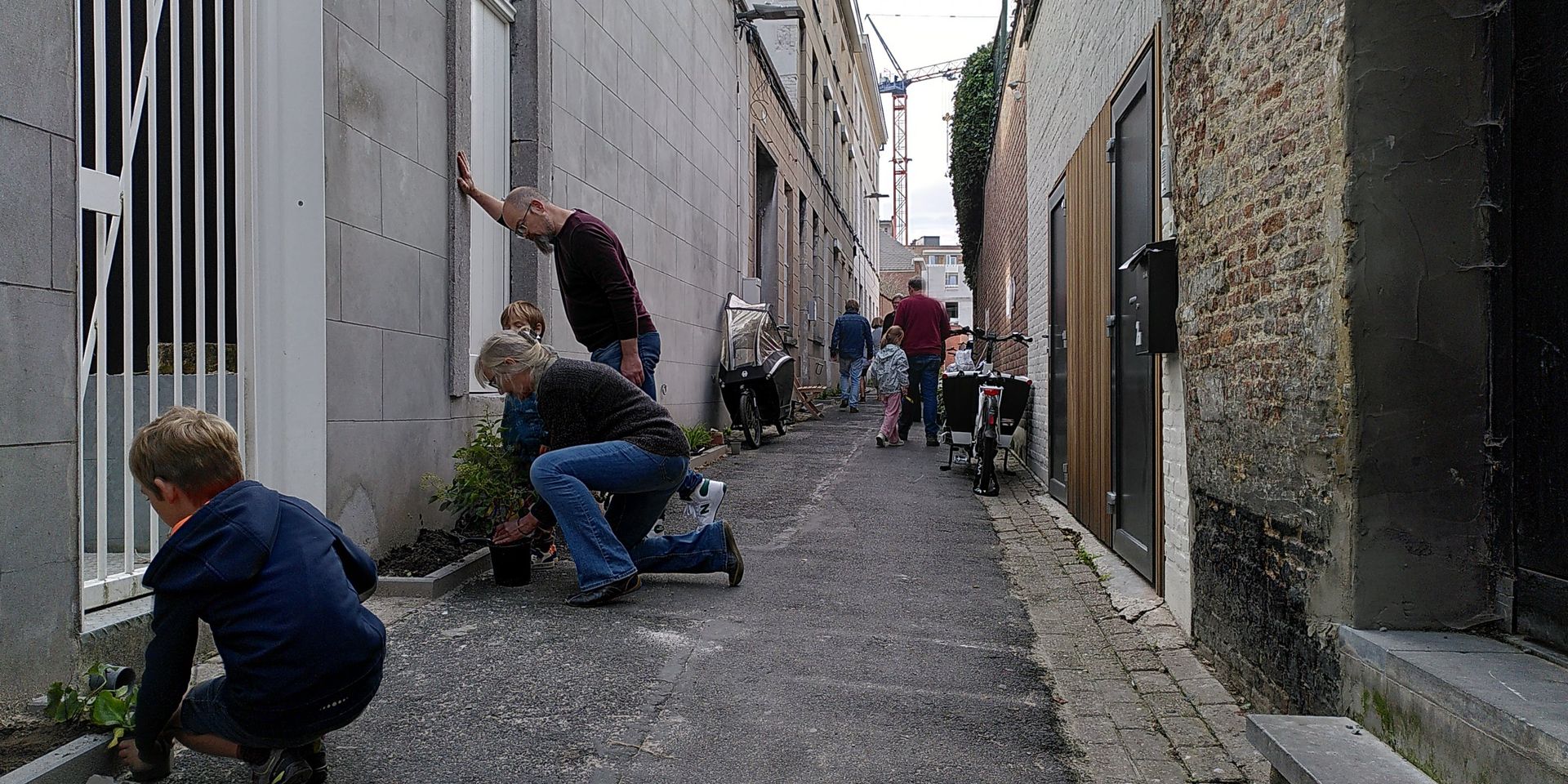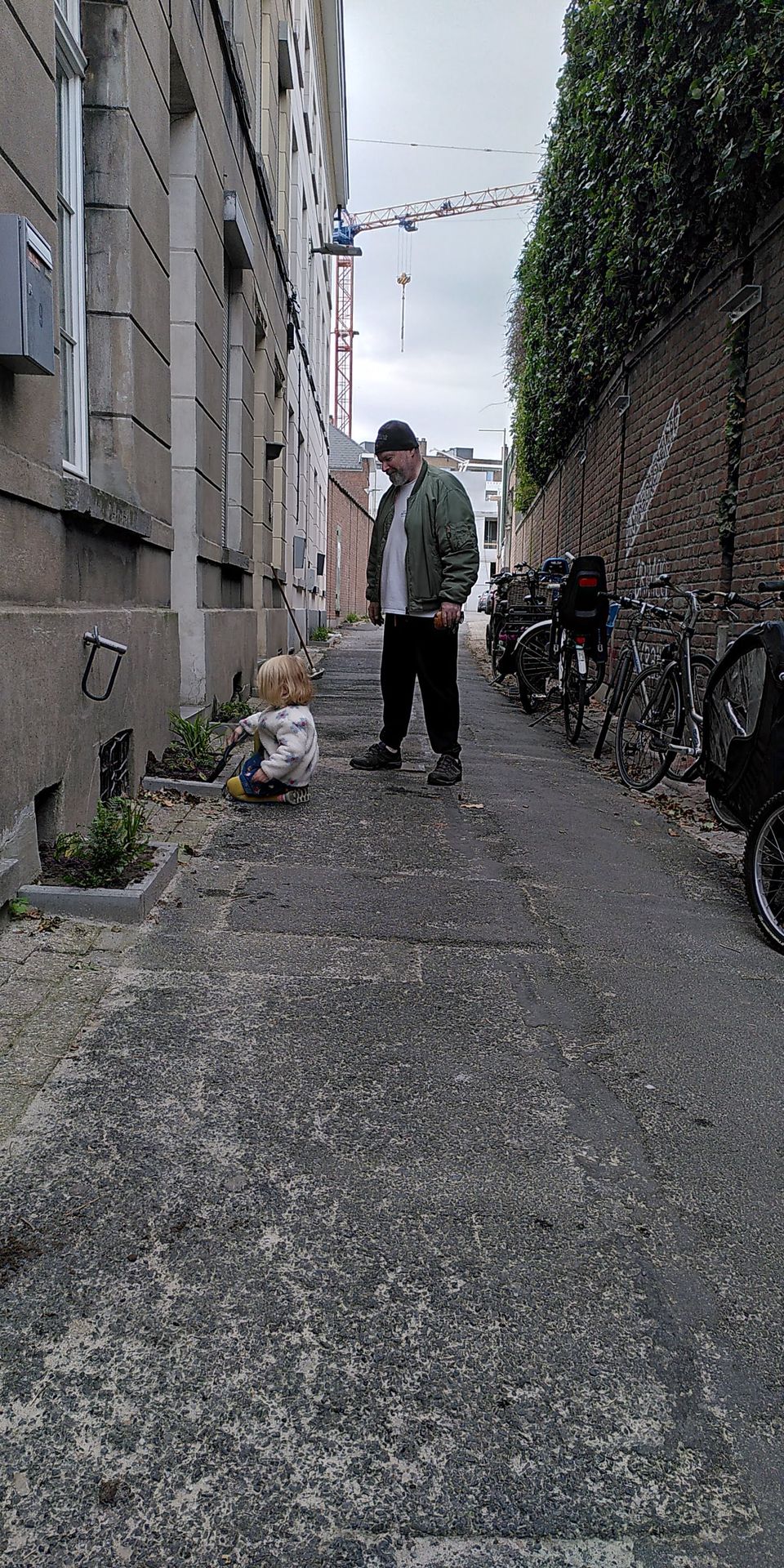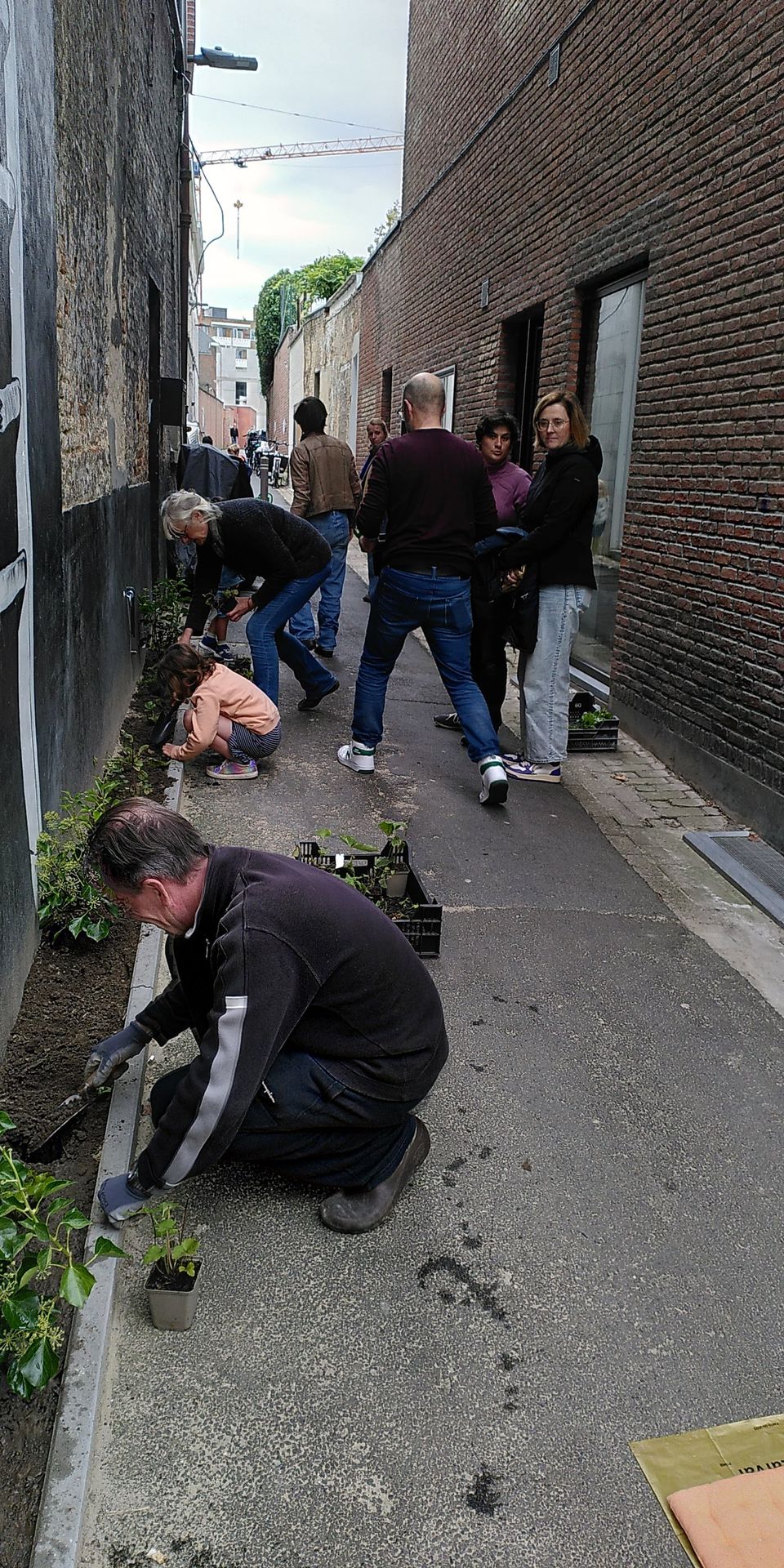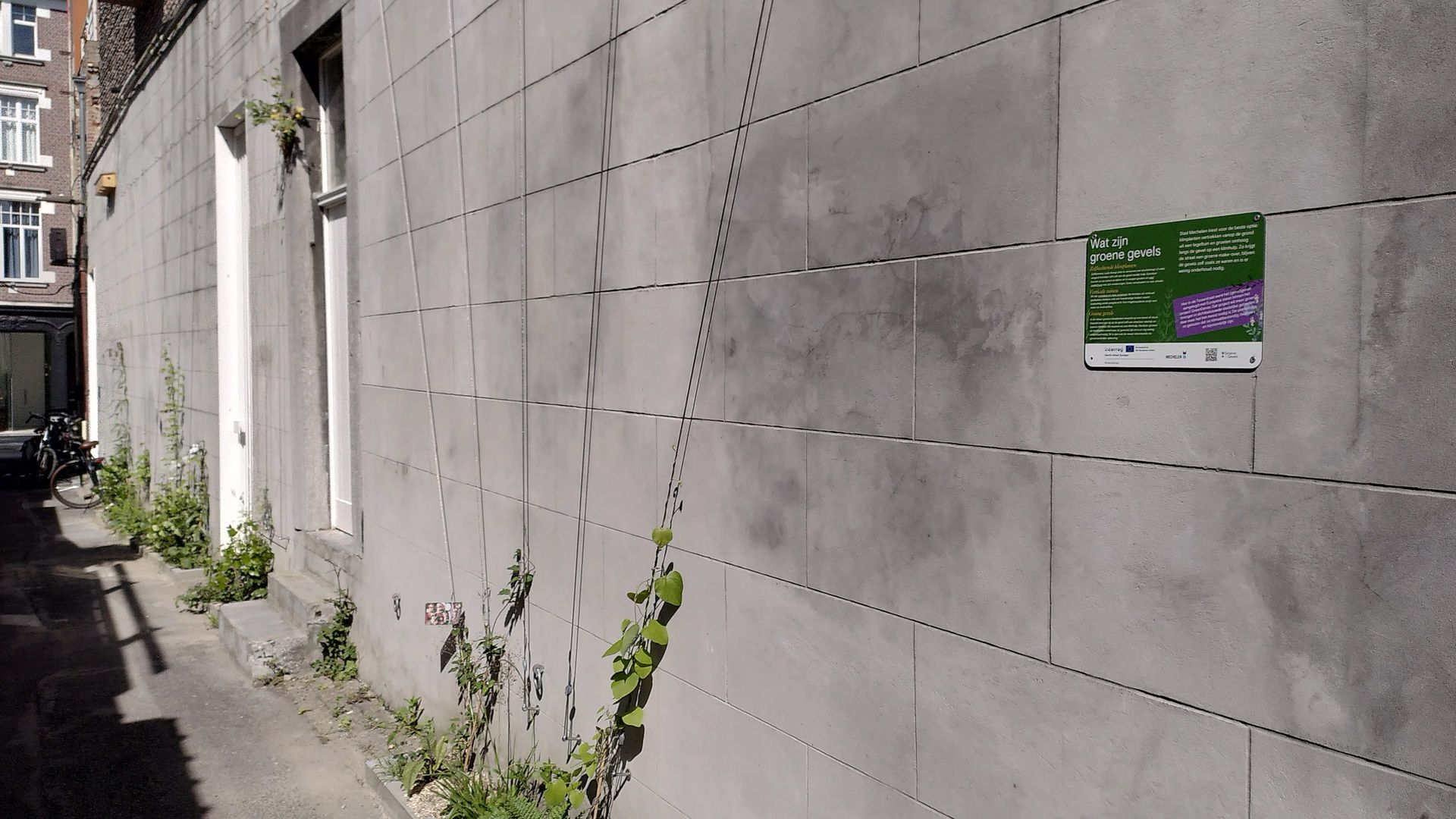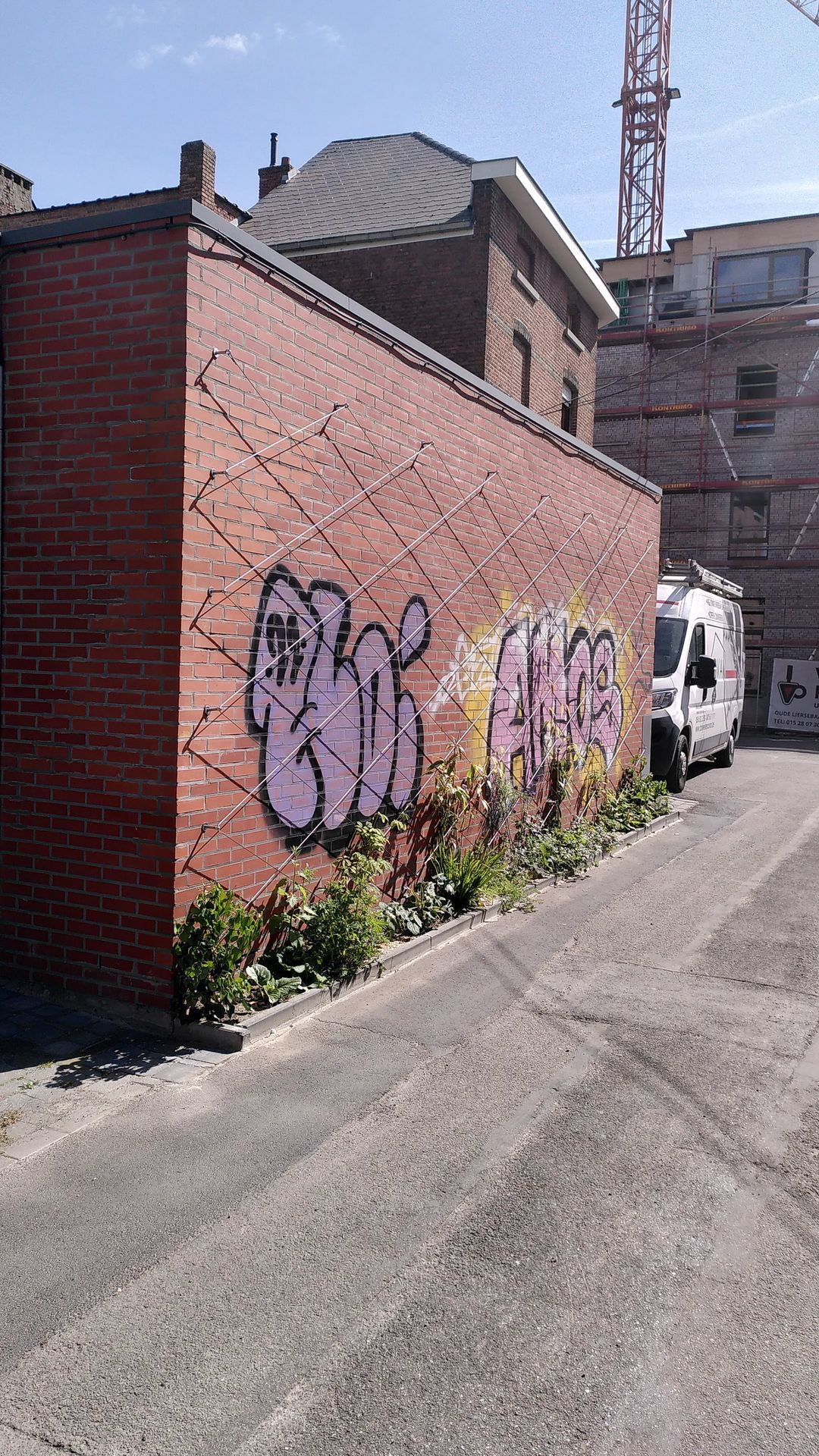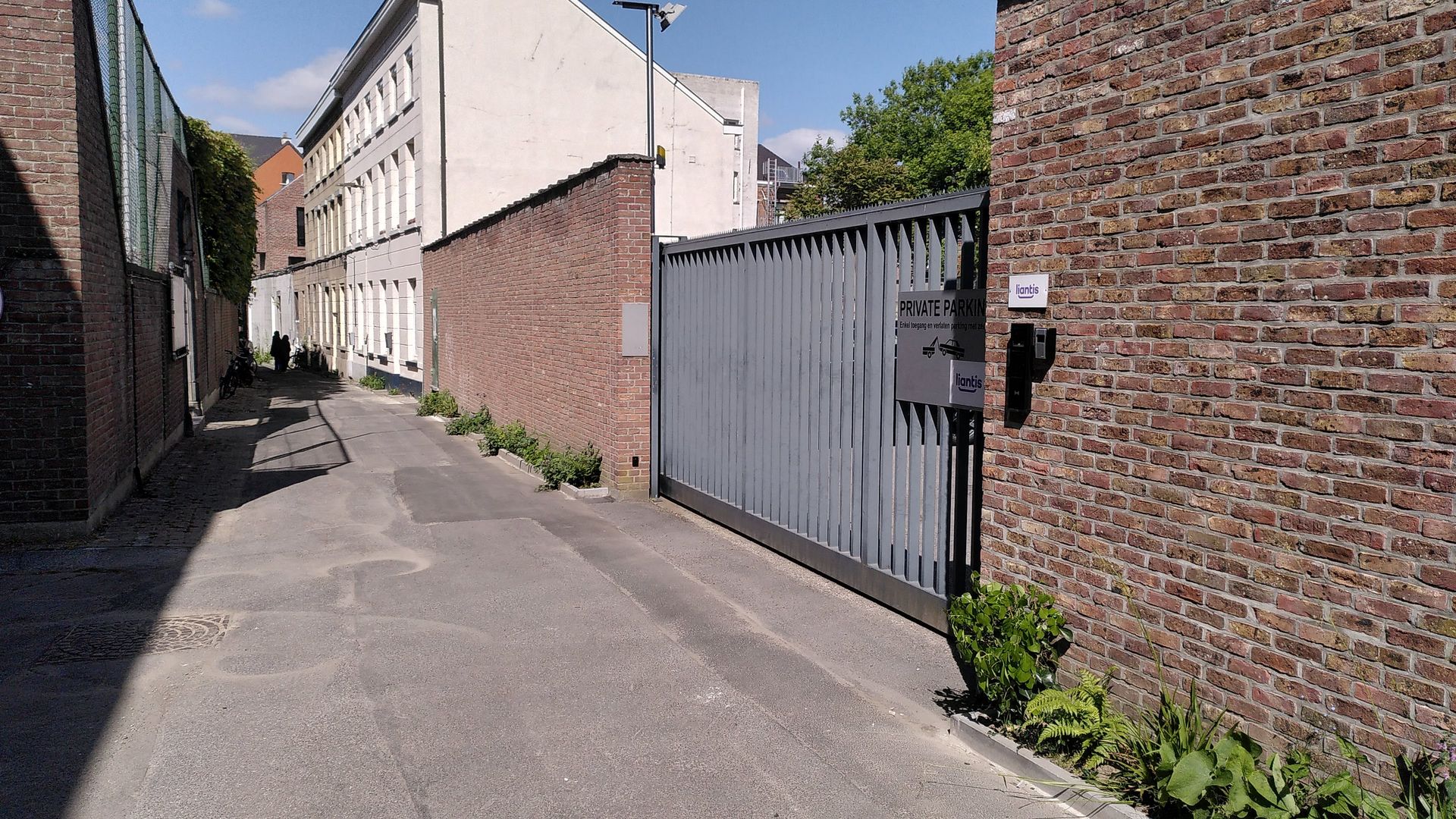In Mechelen the percentage of paved surface is high, approximately 25%. Therefore, the city of Mechelen aims at depaving and greening as much as possible on its public domain and encourages citizens to take action in their private spaces. With the Interreg Europe GreenDense project Mechelen wants to accelerate its ‘green pearls’ initiative in the inner city while using the mosaic approach. Bottom-up greening initiatives, such as in the Tessestraat, are highly valued and encouraged by the city government.
Today, 16% of all surface area in Flanders consists of paved surfaces. This makes Flanders one of the most paved areas in Europe, creating an increased risk for flooding, heat stress and a loss of biodiversity, particularly in densely populated and built-up cities. Cities can take measures in streets and squares to reduce these climate-related risks, but they cannot do this on their own. They need citizens to get on board and to take action - such as in the Tessestraat.
How it started: an inspiring example
In 2023, the city of Mechelen redesigned the Onze-Lieve-Vrouwstraat, an important shopping street in the inner city. The redesign included separate sewerage, pocket gardens with trees and biodiverse plants and benches to relax. Inspired by the greening of the Onze-Lieve-Vrouwstraat, residents of one of its side streets, the Tessestraat, wondered if and how they could also green their street. They decided to ask the question to the city government.
A personal approach
The question was picked up by the climate team of the city of Mechelen. A representative of the team arranged to meet the group of residents in the Tessestraat in the home of one of the residents. The objective of the meeting: listen to their ideas and dreams for greening. Attendees included the responsible alderman and a representative of the public domain team of the city of Mechelen. The main question of the residents was to have tile gardens in the street, bordering the facades. During the meeting, the city not only listened but also explained what kind of support the city could provide for greening (assistance with the execution of tile gardens etc.). During this meeting, one of the residents was ‘elected’ by the other residents to be the main point of contact for the project. The advantage of this street was that it’s a narrow and small street, where most of the residents already knew each other and were in contact with one another. The feeling of a joint project was already present.
From tile gardens to green oasis
During the first meeting, it was agreed that the plans would further be developed with a participatory approach, involving all the residents and the school in the street. In the next months a workshop was organised in the school to define the location of the tile gardens together with the residents. However, during this workshop, it became clear that there was an eagerness to go a few steps further with the greening. Hence, a green garland crossing the alley and ‘green facades’ were added to the project.
Joint planting day
The depavement team of the city of Mechelen helped with the construction of tile gardens, removing the tiles, placing curb stones and adding topsoil. Afterwards, it was time to plant. In autumn, the climate team organised a joint planting day with the enthusiastic residents. The species of the plants were checked with the urban ecologist of the city of Mechelen, to ensure they were bee-friendly and diverse enough. Even with the plants being young and still needing time to grow, the little dots of green immediately changed the outlook of the alley.
Green facades
After the tile gardens were planted, residents could indicate of they were in favour of their facade being covered with climbing aids and climbing plants. Most of the residents were very enthusiastic about this. The city co-designed the exact outlook of the green façade with the residents and defined the climbing plants that were used, chosen from a biodiverse selection. Now that the climbing aids and climbing plats are installed, the Tessestraat just needs some time to be turned into a green oasis, with birds funding their way to the nest boxes within the greenery. In this way, the Tessestraat will become a street with green on the ground, on the facades and even in the air.
Learnings
- Listen to residents and demonstrate that you take them seriously (for example by involving an alderman or other city official)
- Meet residents in person
- Make sure there’s a main point of contact, who knows the other actors involved
- Start small, but keep the window of opportunity open. Be flexible
- Make residents part of the project (while for instance involving them with the execution of works, such as planting)
- Make it fun!
